What is Emerald Ash Borer?
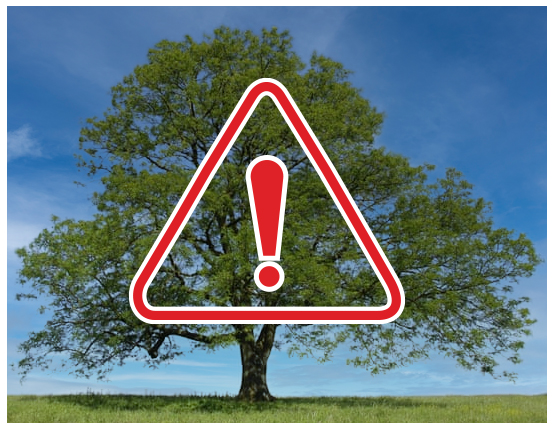
Alert! Tree emergency!
You may have seen our recent post where we warned you about an invasive insect, Emerald Ash Borer (EAB). This pest could kill all our ash trees within a few years, so we need to prepare now! In the earlier post, we encouraged you to help us find Ash trees and map them using iNaturalist. While you’re working on that, we hope you will also keep watch for signs of the insect in our area. Early detection is key to saving as many trees as possible. A quick response will also help reduce the dangers to life and property that EAB-infected trees can cause.
What is EAB?
Emerald Ash Borer (Agrilus planipennis) is a beetle from Asia. It probably hitchhiked to the USA in a packing crate or other wood product around 2002. It causes only minor problems in its home environment, but it has no natural predators here. It reproduces rapidly and the population destroys trees within a few months. No ash trees can be expected to survive an attack of EAB without chemical treatments to protect them. Hundreds of millions of trees have been killed in the US since EAB arrived here.
The beetle arrived in Michigan over twenty years ago and has since spread to 35 US states and 5 Canadian provinces. It was first found in Texas near the Louisiana border in 2016 and is now known to be in six Texas counties. We still have not found any of them in Austin, but a beetle or its eggs could arrive any day on a load of firewood or other cargo.
Let’s learn what to look for so we can respond in a timely way. Then we can protect our best ash trees against EAB before it kills them.
Shiny and Green
The insect is small and easy to overlook. The most striking detail is the shiny, green shell that sometimes glitters gold, copper, or purple in sunlight. Its body is less than half an inch long and an eighth of an inch wide.
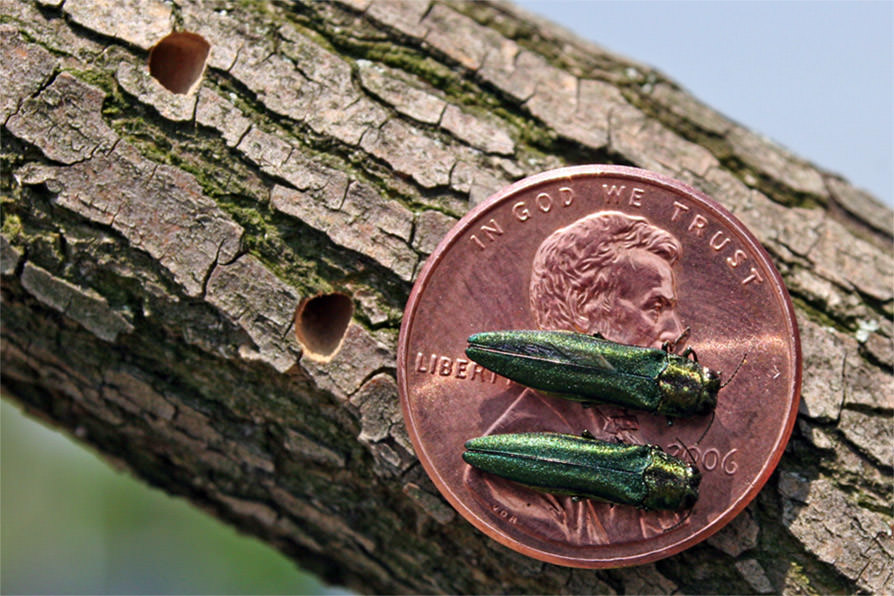
Two adult Emerald Ash Borers with a penny for size reference. Note “D”-shaped exit holes to the left. Image courtesy newbruswicktoday.com
When it flies, the green shell opens to reveal its bright, red body.
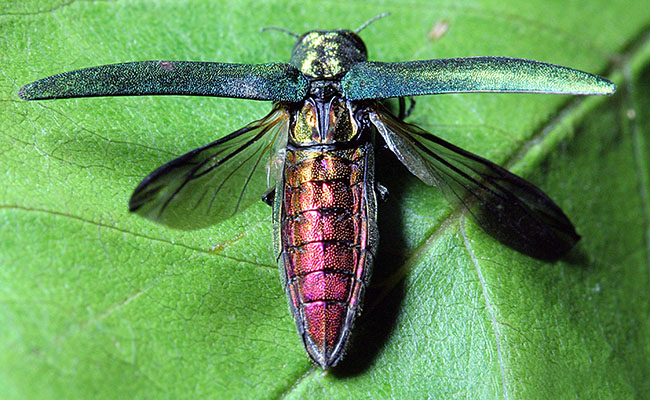
Adult Emerald Ash Borer with wings spread to reveal red body underneath. Image courtesy USDA-APHIS.
If you see an adult EAB, please try to get a photo and report it. The iNaturalist app and website are one good place to record your find. You can also report it to Austin’s Urban Forester via 311, send an email, or contact the Texas A&M Forest Service.
Larvae
Adult beetles eat some leaves from our ash trees, but the larvae cause the real damage. The adult lays eggs on the bark in late spring. When they hatch, the larvae chew into the bark and begin eating the tender sapwood just beneath it. By the end of summer, the larvae may be as long as 1.5 inches.
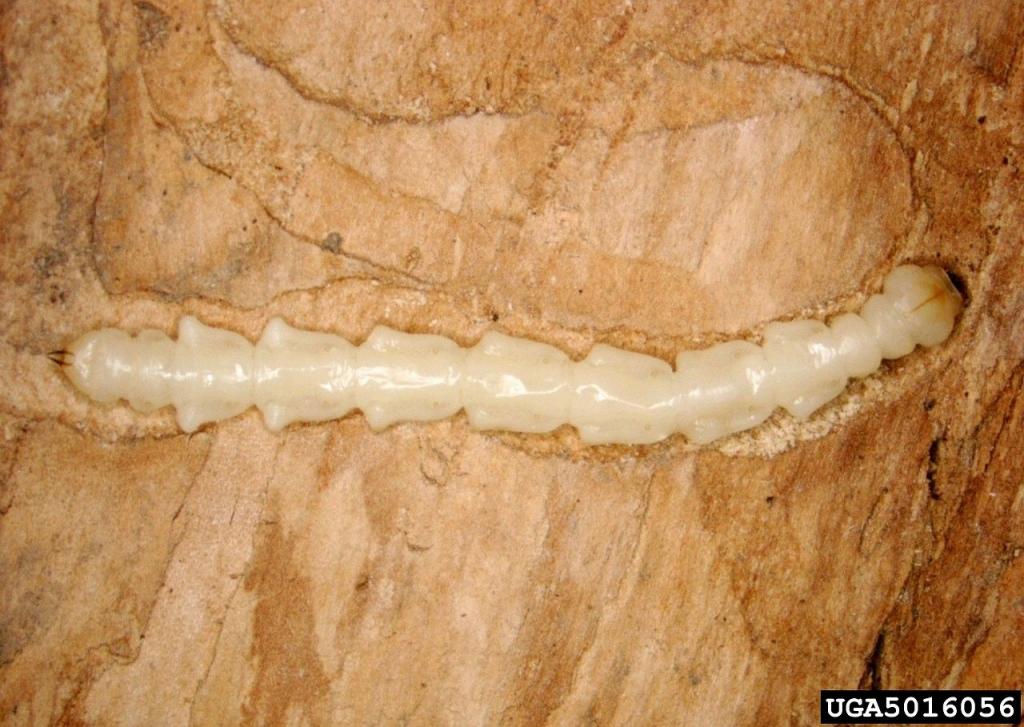
EAB larvae chew tunnels through sapwood. This one is exposed in its tunnel because the bark has been removed. Image by Pennsylvania Department of Conservation and Natural Resources.
Galleries
We will keep our eyes open for adult beetles and larvae, but we are more likely to find the insect based on the tree’s reaction. EAB can feed on trees unnoticed for some time before symptoms appear. In a tree that has been attacked by EAB, we may see bark peeling off. There will be serpentine tunnels, or galleries, underneath. Even without seeing a larva, this is a strong sign we have found EAB.
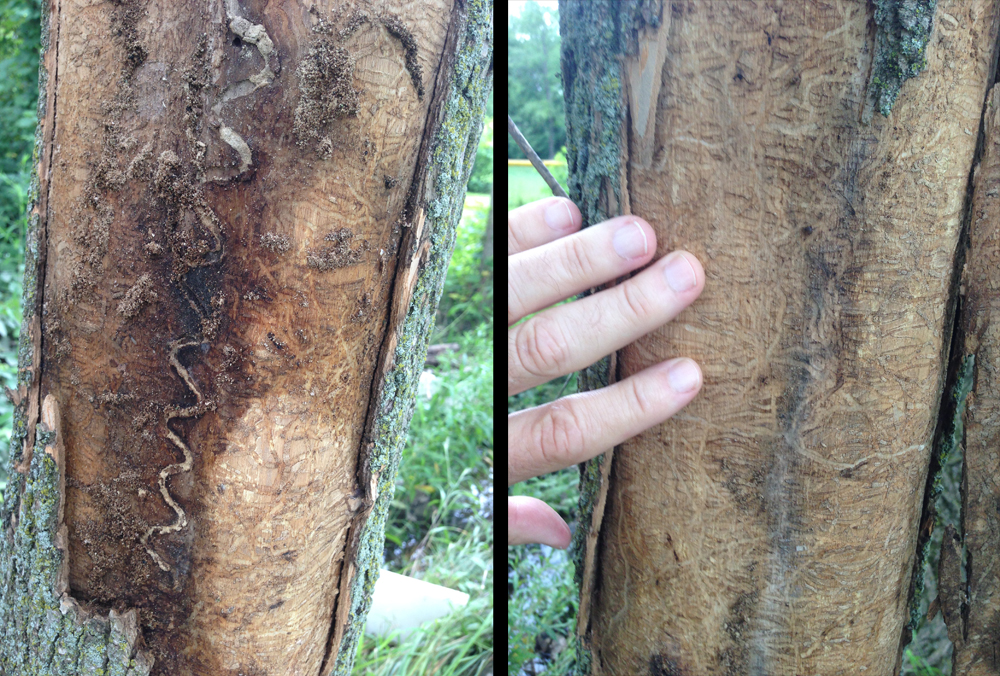
Serpentine galleries under the bark of an ash log are a strong indicator of EAB infestation. Photo by M. Merchant, Texas A&M Agrilife.
Exit holes
Near the end of summer, the larvae develop into adults and emerge from the wood to fly away. They make holes shaped like the letter ‘D’ as they exit the wood. Other borers leave similar holes, so this is not a definitive sign of EAB. Still, please log and report any ‘D’-shaped exit holes you see so foresters can determine whether EAB is the cause.
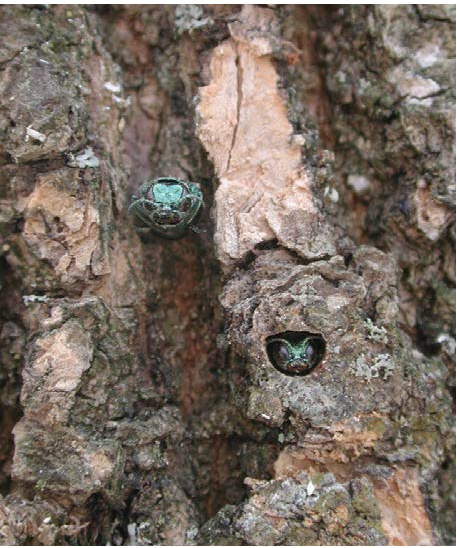
A D-shaped exit hole with an adult Emerald Ash Borer ready to fly away. Photo by Deborah Miller, US Forest Service.
Woodpeckers
When a tree is infested with EAB, woodpeckers take the opportunity to get a quick snack. If your ash tree is seeing a lot of woodpecker activity, it could be a sign they are feeding on EAB. Further investigation would be warranted.
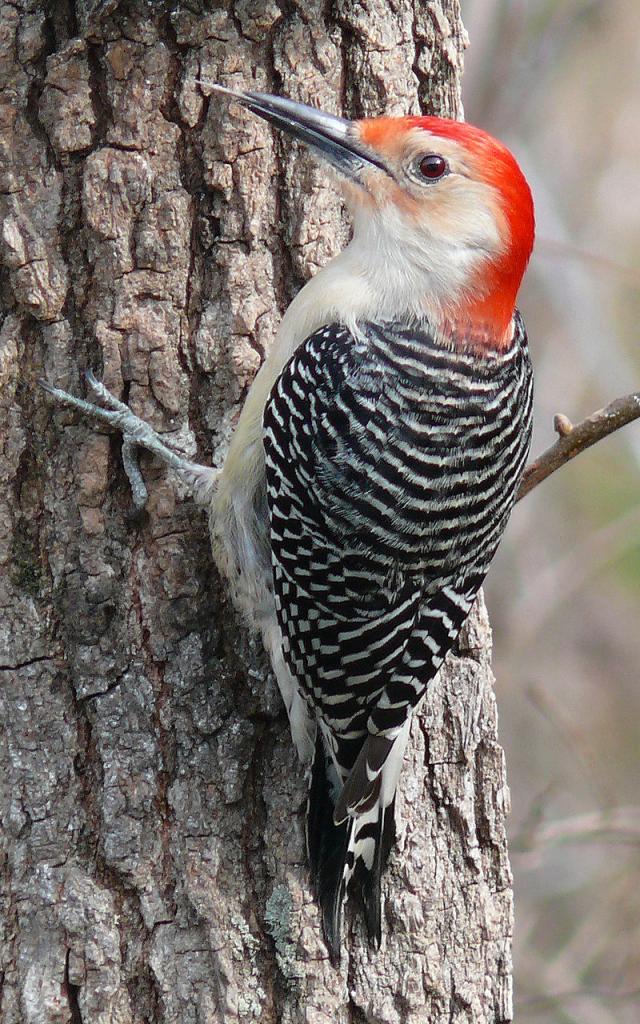
Red-bellied woodpeckers are the most common type in Austin, but any woodpecker we see might be feeding on EAB larvae. Image courtesy Ken Thomas.
Branches dying
Any of the above sign or symptoms of EAB might be present and still go unnoticed. Often, the first detections of EAB are found based on the overall tree condition. As the larvae destroy the water-conducting tissue, branches begin dying throughout the canopy. The higher branches tend to thin and die first. Later, the tree may send up thick clusters of new branch sprouts from the lower trunk and roots. A tree in this condition is probably too far gone to save, but awareness of the problem can help save nearby trees.
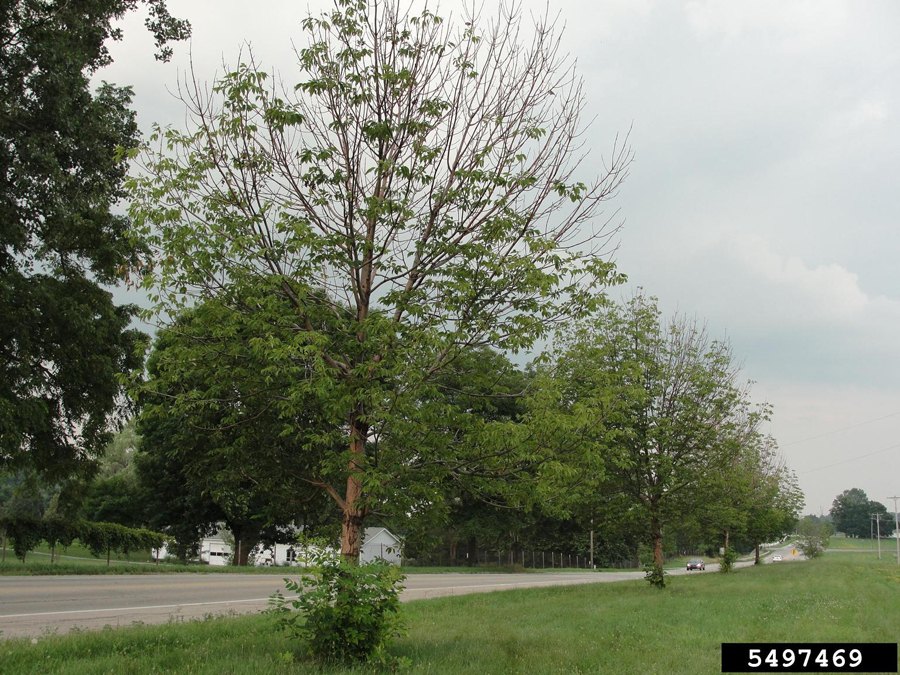
Ash trees with thinning branches and profuse sprouts at the base may be reacting to EAB attack. Photo by Leah Bauer, USDA Forest Service.
Unfortunately, this type of symptom can be caused by many problems besides EAB. For example, an extreme freeze in February 2021 caused similar symptoms in some ash trees. A qualified arborist can help you determine the cause of your tree’s decline and develop a good management strategy.
Help With Science
As you search for ash trees and Emerald Ash Borers, you will likely see some other insects, plants and animals. We hope you don’t find any Agrilus planipennis, but we think you will still have fun logging the organisms you find with iNaturalist. You can share any living things you see, but most do not cause any serious problems in our area.
Next Steps
Now that you’ve found your ash trees and you know how to identify EAB if you see it, it’s time to make a plan. Our next blog post, “Check Your Ash,” will help you decide whether to protect your tree against EAB or remove it.
This information is sponsored by the City of Austin. Learn more about trees and resources at the Tree Information Center!
www.austintexas.gov/trees


